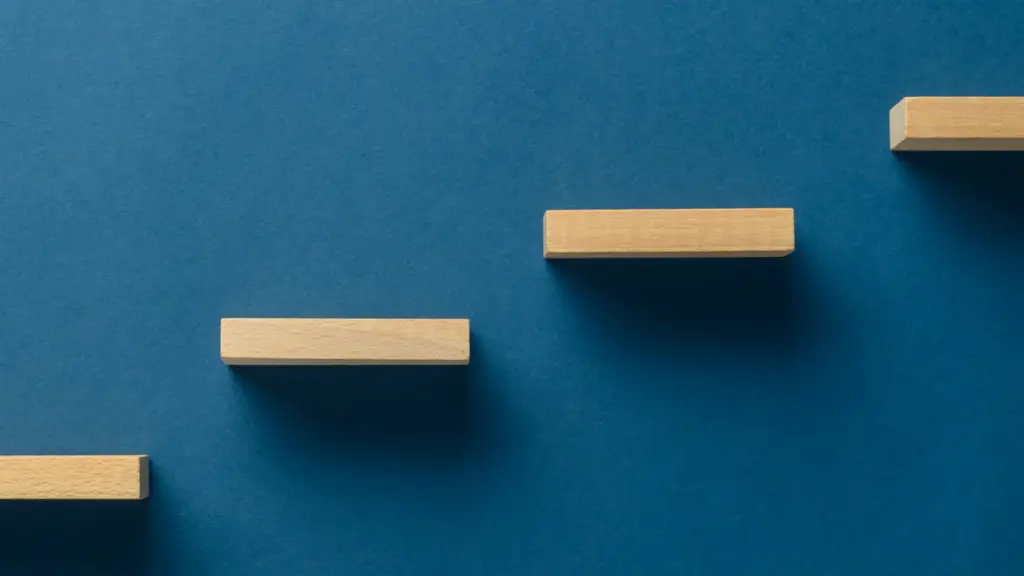This post may contain affiliate links, please see our disclaimer for details.

Before jumping into the debt snowball method and how it works, I’d like to share a quick statistic regarding the average amount of debt in the United States.
According to business insider, the average American has $52,940 worth of debt across mortgage loans, home equity lines of credit, auto loans, credit card debt, student loan debt, and other debts like personal loans!
If you are one of countless Americans who want to know how to repay debts, you may have heard of a lot of different methods of repaying debts.
One such method is the debt snowball method!
The debt snowball method has helped us stay on track when paying off debt and is the method we used to pay off $56,000 in student loans.
Using the debt snowball made us very excited and stay motivated when paying down our student loans. I remember how my smallest student loan was only $800. We were able to pay it off quickly. It felt GREAT!!
We really could not express our excitement in words when we saw the balance for that small loan become zero!!
That excitement gave us the motivation to keep going. To make all the remaining loan balances become ZERO.
If you are reading our article, you must wonder how to pay off your debt. Let me introduce you to your best new friend: the debt snowball method!
Table of Contents
What is the Debt Snowball Method?
The debt snowball is one method to pay off debts in a specific way. You just need to arrange and pay off your debts from smallest to largest, ignoring the interest rate. Doing so builds momentum or a snowball effect that helps keep you going.
Imagine a snowball rolling down a mountain. At first, it was very small. As it continues to roll, the snow layers increase.
Each time you add a layer, the snowball gets bigger and bigger. This helps the snowball gain a lot of momentum.
By the time the snowball had reached the foot of the mountain, it had grown to the size of a boulder!
How Does the Debt Snowball Work? Step-By-Step

- Step 1: List your debt amounts (except mortgages) from smallest to largest, regardless of interest rate.
- Step 2: Continue making the minimum payment on all debts except for the smallest debt amount.
- Step 3: Pay off as MUCH of your smallest debt as FAST as possible.
- Step 4: Repeat steps 1 through 3 until all debts are paid off in full!
Here are more details for each of the steps:
Step 1: List your debts (Except your mortgages), from smallest to largest, regardless of interest rate.
Write down every outstanding debt you have (except for the mortgage). This may include credit cards, student loans, medical bills, car loans, and any other types of debt you have broken out from smallest amount to largest.
Write down the minimum monthly payment, monthly due date, etc., just to keep everything on track.
Related content: Is Car Loan Bad? Why I Decided To Sell My Luxury Car
Step 2: Make a minimum payment for all debts except the smallest debt.
Keep paying the minimum monthly payment for all debts. The payment history will affect your total credit score.
Therefore, the more you pay on time, the fewer the late fees. Doing this will increase your credit score!
Having an excellent credit score is so important. We ended up not getting the best interest rate for our second property due to having a bad credit score which was sad.
The positive thing is that we learned a valuable lesson and became more careful of our credit and monitoring our credit scores.
If you’re having issues with improving your credit, I highly recommend checking out The Credit Pros! They are a very reputable company that offers incredible credit repair services.
They have all of the tools needed to help rebuild your credit, and you can check your credit score for free!

Related content: Save $2500, How We Successfully Dealt With Debt Collectors.
Step 3: Repay as much of your smallest debt as possible.
After making a minimum payment on all debts accounts, put any remaining money into the smallest debt (loan) until the smallest debt is paid off. Then move on to the next smallest debt.
If you want to know what we did to save money and our side hustle to make extra income to pay off our student loans faster, you can see our other article, How I Graduated Free of Student Debt After Just Becoming A Dad.
Step 4: Repeat steps until all debts you have paid off all debts in full.
Continue to put all extra cash into the smallest outstanding debt until it is paid off in full.
You can then focus your efforts on paying off the next smallest debt. Do this until all debts are fully paid off!
Why we used the debt snowball
“Focusing on paying down the account with the smallest balance tends to have the most powerful effect on people’s sense of progress – and therefore their motivation to continue paying down their debts.”
Remi Trudel
In the beginning, like many people out there, I didn’t know that student loans were bad and never thought I could graduate student debt-free.
People I knew would congratulate me on successfully receiving a student loan for any given semester. When we purchased our first townhome, I still recall how I was required to give our lender a future monthly student payback plan (once I graduated).
My income was lower then, so the monthly payment plan was about $30 a month going off an income-driven payment plan. I thought to myself, “oh!? student loans aren’t too bad.
I only need to pay back $30 a month after I graduate!” but when we purchased our second property, I had a better job with a higher income.
At that moment, I was shocked to see how much I needed to pay every month after graduating on an income-driven plan.
The number went up like crazy! That was the first time I realized student loans are not good.
If interested, please contact your student loan provider to see your payment plan when your income increases. Then you will know what I am talking about.
Thank goodness my wife found out about the amazing Dave Ramsey. Even now, we are still very grateful for Dave Ramsey’s teachings on personal finance and getting out of debt, he helped change our lives!
My wifey listened to him tons at first and then would tell me, “Hey baby, let’s save up for your MBA tuition by ourselves and pay down your bachelor’s student loans”!
My wife received a full scholarship, and her parents also helped her with other expenses before we got married. I had accumulated $25,000 in student debt from my bachelor’s degree. My MBA was a remote/online program with six semesters; the total tuition was $31,000.
That means we needed to pay off $56,000 once I graduated!
While saving and paying for my MBA tuition, I still needed to pay off the student loans left from my bachelor’s degree. We used the debt snow method to get it done.
First, we listed all the balances and then paid them off from small to big, ignoring the interest rate. Using this method gave us much motivation and a positive feeling whenever we paid a loan balance off!
Later, the COVID student loan relief plan went into effect, and the interest rate became zero during a specific period. We were able to save a lot on interest from this relief plan.
Related content: Effects of Covid-19 [4 Good and 3 Bad]
From the point of view of mathematics and numbers, Snowball’s debt won’t let you save the most because of varying interest rates.
The point is to change behavior and encourage/motivate us to pay our debts faster with more motivation in the long run.
“Winning at money is 80 percent behavior and 20 percent head knowledge. What to do isn’t the problem; doing it is. Most of us know what to do, but we just don’t do it. If I can control the guy in the mirror, I can be skinny and rich.”
Dave Ramsey
Everyone’s financial situation is different. Please consider other debt repayment strategies until you find one that suits you best. For us, the debt snowball worked great!
I created a specific article sharing all you need to know about the Debt Avalanche: A Method to Becoming Debt Free. Feel free to check it out!
Remember, many methods and strategies help you pay off your debts. We all are in unique financial situations and may have different types of debt, and we hope you can find a method or a combination of methods that works best for you.
Although we did not need to refinance student loans, it can be an option that can save you potentially thousands of dollars over the life of a loan.
If you need to refinance student loans, we highly recommend using LendKey.
They offer low-rate and low-cost student loan refinancing. Additionally, your credit score will not be impacted when exploring rates.

Has the debt snowball method been effective for you? What are some other strategies you’ve enjoyed to pay off debt?
Please leave a comment below and let us know!
Disclaimer:
We hope the information in this article provides valuable insights to every reader but we, the Biesingers, are not financial advisors. When making your personal finance decisions, research multiple sources and/or receive advice from a licensed professional. As always, we wish you the best in your pursuit of financial independence!

